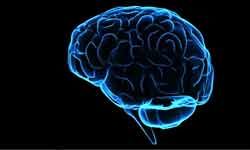The basic element of the nervous system is the nerve cell, or neuron. In combination, neurons form nerves, fibers that transmit impulses throughout the body. A protective covering of myelin, a fatty substance, insulates parts of the fibers.
The action of nerve cells is both electrical and chemical. At the ends of each nerve cell there are specialized regions called synaptic terminals, which contain large numbers of tiny membranous sacs that hold neurotransmitter chemicals. These chemicals transmit nerve impulses from one nerve cell to another. After an electrical nerve impulse has traveled along a neuron, it reaches the terminal and stimulates the release of neurotransmitters from their sacs.
Advertisement
The neurotransmitters travel across the synapse (the junction between the neighboring neurons) and stimulate the production of an electrical charge, which carries the nerve impulse forward. This process is repeated over and over again until a muscle is moved or relaxed or a sensory impression is noted by the brain. These electrochemical events can be considered the "language" of the nervous system, by which information is transmitted from one part of the body to another.
There are two major divisions of the nervous system: the central nervous system and the peripheral nervous system. The central nervous system consists of the brain and the spinal cord. The brain lies within the skull and governs body functions by sending and receiving messages through the spinal cord. Protecting the brain and spinal cord are bones, layers of tissue, and cerebrospinal fluid.
Once messages leave the central nervous system, they are carried by the peripheral nervous system. The peripheral system includes the cranial nerves (nerves branching from the brain) and the spinal nerves (nerves branching from the spinal cord). These nerves convey sensory messages from receptor cells in the body to the central nervous system. They also transport motor impulses from the central system out to the body, where muscles and glands can respond to the impulses.
The autonomic nervous system, which is part of the peripheral nervous system, reg-ulates all activity that is involuntary but necessary for life, including activity of the internal organs and glands.
Working together, these divisions coordinate adjustment and reaction of the body to internal and external environmental conditions.
Now that we've covered the nervous system, let's discuss the brain, cerebrospinal fluid, and other related elements in the next section.
Advertisement
